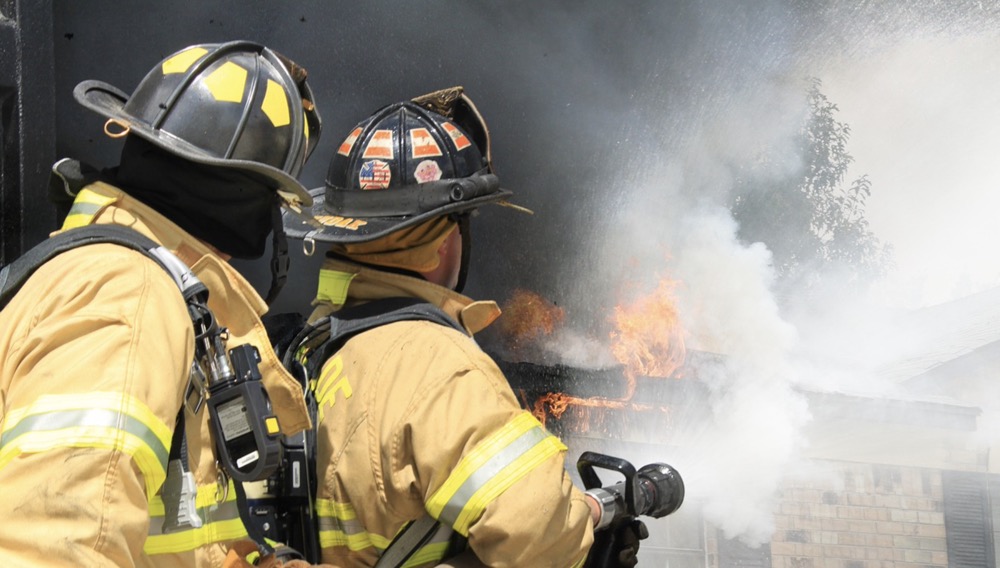
Public safety will replace land mobile radio (LMR) with LTE for its primary mission-critical voice communications when first responders trust the technology—a process that is beginning to happen now, according to Jeff Johnson, CEO of the Western Fire Chiefs Association and former vice chair of the FirstNet Authority.
“As we think about our future, people are always asking me, ‘When will LMR die?’” Johnson said during his keynote address during the IWCE 2020 Virtual event. “Frankly, I think it’s an irrelevant question.
“I think the right question is: How will LTE change the current landscape for public-safety responders? To me, there’s no magic here. It is about coverage. It’s about backhaul. It’s about reliability. It’s about devices. It’s about security, and it’s about functionality and feature sets of all those combined things. And the fact is, all [of those characteristics] can be achieved through LTE.”
Johnson did not offer a timetable for public-safety users to transition from legacy LMR systems to LTE for mission-critical push-to-talk voice communications, but he did describe the conditions necessary for the technological migration to occur.
“There’s no question, in my view, that LTE is the future,” Johnson said. “When does it happen? Here’s when it happens: Public safety will switch to LTE exclusively the day some lieutenant in the fire station says to his battalion chief, ‘Why do I carry two devices, when all I ever use is my LTE device?’ That’s when it changes.
“It isn’t when you meet the technical requirements or anything else. It’s when the people who use the tool insist on this tool. Because, at the end of the day, we can’t fail.”
Johnson reiterated this point when concluding his remarks with a message to vendors developing offerings for the first-responder community.
“There is a moment in every responder’s history where it is a life-or-death decision, and sometimes the only thing that saves your life—or costs your life—is your ability to communicate,” Johnson said. “If we make the technology tools that public-safety responders are going to use, and it’s the kind of thing that’s a life-or-death decision, then you have to put yourself in you shoes. It’s not just another statistical failure that—one way or another—shows up on your quarterly report.
“No, if you’re going to serve public safety, you have to have the context that their lives—and the lives of the people they serve—are at risk, if my technology or my approach fails. How dare we be anything but the best, when public-safety responders and the customers they serve … when their lives are on the line? How dare we?”
Some have criticized the public-safety community for being reluctant to embrace new technologies, but Johnson said that is not an accurate portrayal.
“It’s not that public safety is slow to adopt—they’re not,” Johnson said. “They’re slow to give up something that works, and what we’re seeing with LTE is that it’s proving itself to work.
“If you can weave together public safety’s need for coverage, in-building penetration and reliability, then what technology it is tends to be moot.
With this in mind, Johnson thanked the Safer Buildings Coalition for its efforts to ensure that facilities have the infrastructure necessary to support public-safety communications.
“At the end of the day, if your tool works sometimes, you quit using it—if your car only starts every third time, you get a different car,” Johnson said. “We can’t have our tools stop working when we enter a building; it’s just not functional. So, in-building coverage is important, and we have to continue to improve in-building coverage.”
Johnson also noted the important role that location-based services promise to play in ensuring the safety of first responders.
“The Z-axis—the vertical axis, knowing what floor a police officer, paramedic or firefighter are on—that is, in fact, the Holy Grail of what we’re trying to do here,” Johnson said. “When, as an incident commander, I hear over the radio, ‘Mayday, mayday, mayday, I’ve fallen through the floor,’ I have got to know where those crews are, and I’ve got to know where to send the RIT [Rapid Intervention Team] team to get them.
“Getting that floor right, getting that left and right axis of where they are … getting that right is paramount for public safety. It creates, for the first time, true situational awareness.”
Image courtesy Ciobanucatalina